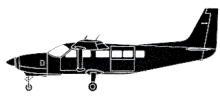Incident Overview

Description
At 15:23 Cessna Caravan C-FAGA was fueled at Windsor Airport, ON (YQG) in preparation for flight GGN125 to Pelee Island, ON. At 15:55, the aircraft was de-iced and departed ten minutes later. The aircraft landed at 16:20. While on the ramp, two individuals voiced concern to the pilot that there was ice on the wing. Freezing precipitation was falling. The pilot was observed to visually check the leading edge of the wing; however, he did not voice any concern and proceeded with loading the passengers and cargo. At approximately 16:38, flight GGN126 departed Pelee Island for Windsor. After using most of the runway length for takeoff, the aircraft climbed out at a very shallow angle. The pilot raised the flaps while over Lake Erie. The Caravan then entered an aerodynamic stall. Because the plane was rolling into a climbing right turn, the left wing stalled first. The nose dropped and the airplane rolled to the left. The airplane was too low for recovery and struck the ice. It was determined that the aircraft was overweight by 1270 pounds (576 kg) when it departed Pelee Island. The maximum takeoff weight for this flight was 8550 pounds (3878 kg). FINDINGS AS TO CAUSES AND CONTRIBUTING FACTORS: 1. At take-off, the weight of the aircraft exceeded the maximum allowable gross take-off weight by at least 15 per cent, and the aircraft was contaminated with ice. Therefore, the aircraft was being flown significantly outside the limitations under which it was certified for safe flight. 2. The aircraft stalled, most likely when the flaps were retracted, at an altitude or under flight conditions that precluded recovery before it struck the ice surface of the lake. 3. On this flight, the pilot’s lack of appreciation for the known hazards associated with the overweight condition of the aircraft, ice contamination, and the weather conditions was inconsistent with his previous practices. His decision to take off was likely adversely affected by some combination of stress and fatigue.
Source of Information
http://www.skybrary.aero/index.php/C208,_vicinity_Pelee_Island_Canada,_2004http://www.skybrary.aero/index.php/C208,_vicinity_Pelee_Island_Canada,_2004Primary Cause
The aircraft was overweight by 1270 pounds (576 kg) when it departed Pelee Island, exceeding the maximum allowable gross take-off weight of 8550 pounds (3878 kg). This overweight condition, combined with ice contamination and a stalled flight, resulted in a significant risk of damage and potential loss of life.The aircraft was overweight by 1270 pounds (576 kg) when it departed Pelee Island, exceeding the maximum allowable gross take-off weight of 8550 pounds (3878 kg). This overweight condition, combined with ice contamination and a stalled flight, resulted in a significant risk of damage and potential loss of life.Share on:





